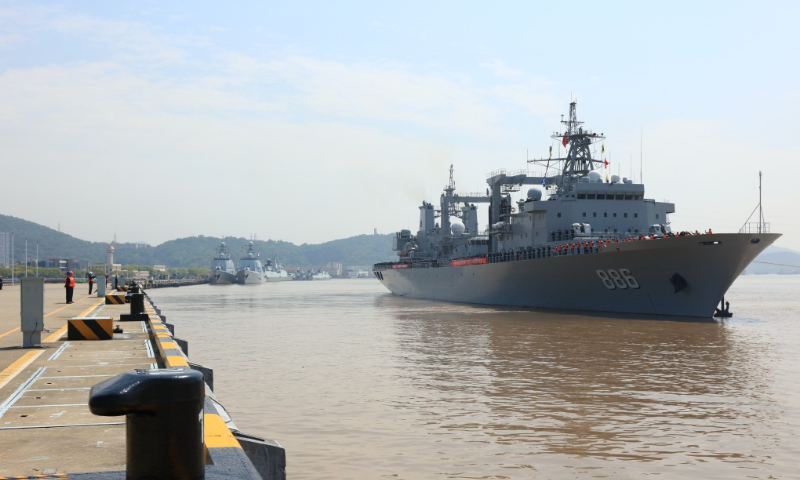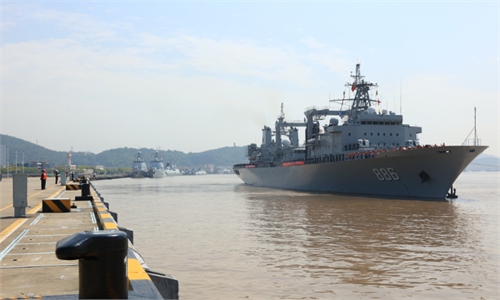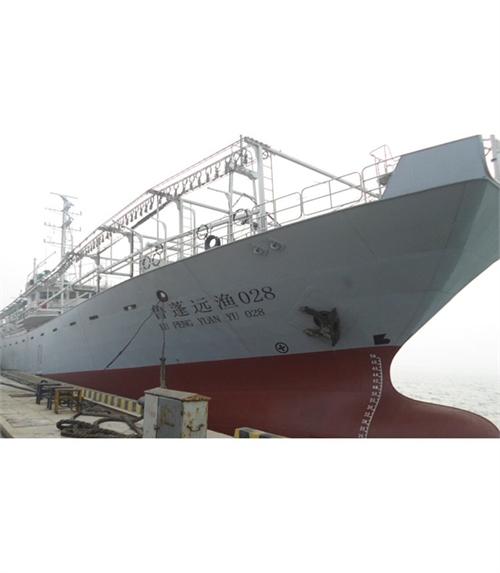PLA Navy in second rescue operation in a month, reflecting rapid response capability

The PLA Navy's 44th naval escort task force set sail from a military port in Zhoushan, Zhejiang Province on April 28, 2023. Among the fleet is the comprehensive supply ship, Qiandaohu. Photo: Xinhua
China's Ministry of Transport announced that starting from 3 am on Tuesday, the rescue operation for the capsized vessel Lupeng Yuanyu 028 has been scaled down to a 48-hour small-scale investigation following a large-scale maritime search and rescue. Three Chinese People's Liberation Army (PLA) Navy vessels participated in this sea rescue operation, marking another non-war military action following the emergency evacuation of Chinese personnel from Sudan by PLA naval vessels on April 26.
A military expert told the Global Times on Tuesday that the PLA Navy's involvement in these critical and emergency missions not only demonstrated its rapid response capability, but also verified that China's building of a "blue-water navy" is intended for the safeguarding of sovereignty, security, and developmental interests.
The fishing vessel Lupeng Yuanyu 028, owned by Shandong-based Penglai Jinglu Fishery, capsized in the central Indian Ocean about 5,000 kilometers west of Perth, Australia, early on May 16, with 39 crew members on board missing, including 17 Chinese, 17 Indonesians, and five Filipinos. A total of seven bodies have been recovered from the site of the rescue operation.
Since the Lupeng Yuanyu 028 capsized, a large-scale maritime rescue has been launched, covering a total of nearly 18,700 square nautical miles, officials said.
No signs of survivors have been found so far. Judging from the analysis of the time of the capsize, the hull structure and the early diving operation, rescuers found that there is very limited space for people to survive inside the ship, and it is preliminarily believed that there are no survivors inside.
After the Lupeng Yuanyu 028 capsized, three PLA Navy vessels arrived at the scene, overcoming the high risks of nighttime operations and poor sea conditions. In the afternoon of May 18, the PLA Navy vessels discovered and salvaged two bodies of victims.
According to reports from PLA media outlets, the 43rd PLA Navy escort task force conducted ship-borne helicopter training day and night in the western waters of the Gulf of Aden on May 17. Operating in an unfamiliar battlefield environment in the open sea, they enhanced their capability to perform tasks under various weather conditions.
Based on the sailing route, the three PLA Navy vessels participating in the sea rescue were likely the 44th escort task force that set sail from Zhoushan, East China's Zhejiang Province on April 28, which consisted of the Type 052D guided missile destroyer Zibo, the Type 054A guided missile frigate Jingzhou, and the Type 903 comprehensive supply ship Qiandaohu.
This marked another non-war military operation by the PLA Navy following the evacuation operation in Sudan on April 26. On April 26, the Type 052D guided missile destroyer Nanning and the Type 903 comprehensive supply ship Weishanhu went to Sudan for the evacuation operation. As of April 29, the PLA Navy evacuated 940 Chinese citizens from Sudan and also evacuated 231 foreign nationals at the request of various countries.
"China's military capabilities cover both traditional security and non-traditional security, with evacuation, maritime rescue, anti-terrorism, and anti-piracy all falling into the category of non-traditional security. For example, if a Chinese fishing boat capsizes off the coast, it requires timely rescue by China's maritime forces," Song Zhongping, a Chinese military expert and TV commentator told the Global Times.
Song said that the PLA Navy's missions in these critical and difficult moments not only reflect its rapid response capability, but also confirm the necessity and purpose of China's construction of a "blue-water navy" to safeguard national sovereignty, security, and development interests, rather than for hegemony or expansion of power.
Public reports show that the rescue operation for Lupeng Yuanyu 028 was a multinational maritime rescue operation.
A larger-scale multinational maritime rescue operation previously took place after the disappearance of Malaysia Airlines flight MH370 in March 2014. At that time, the PLA Navy dispatched vessels including the Haikou, the Qiandaohu, the Kunlunshan, and ships in the 17th escort task force to carry out search operations in multiple sea areas including the eastern Indian Ocean.
Maritime emergency rescue involves extensive international cooperation. When vessels encounter problems in other countries' waters, as long as the information is received, the corresponding foreign institutions will provide timely rescue. "Within their capabilities, vessels near the emergency site and coastal countries can assist in the long-range rescue. This is the international practice of maritime rescue. The more forces involved in the rescue, the higher the chance of successful rescue," Song noted.
As a major maritime country in the world, China always advocates international cooperation in maritime search and rescue, experts said. In the past, the PLA Navy and other countries always had maritime search and rescue as a subject in joint exercises, which proved practical. In the future, the PLA Navy and other maritime search and rescue forces can also conduct joint search and rescue exercises with more countries, which will greatly improve the efficiency of search and rescue, Song said.


